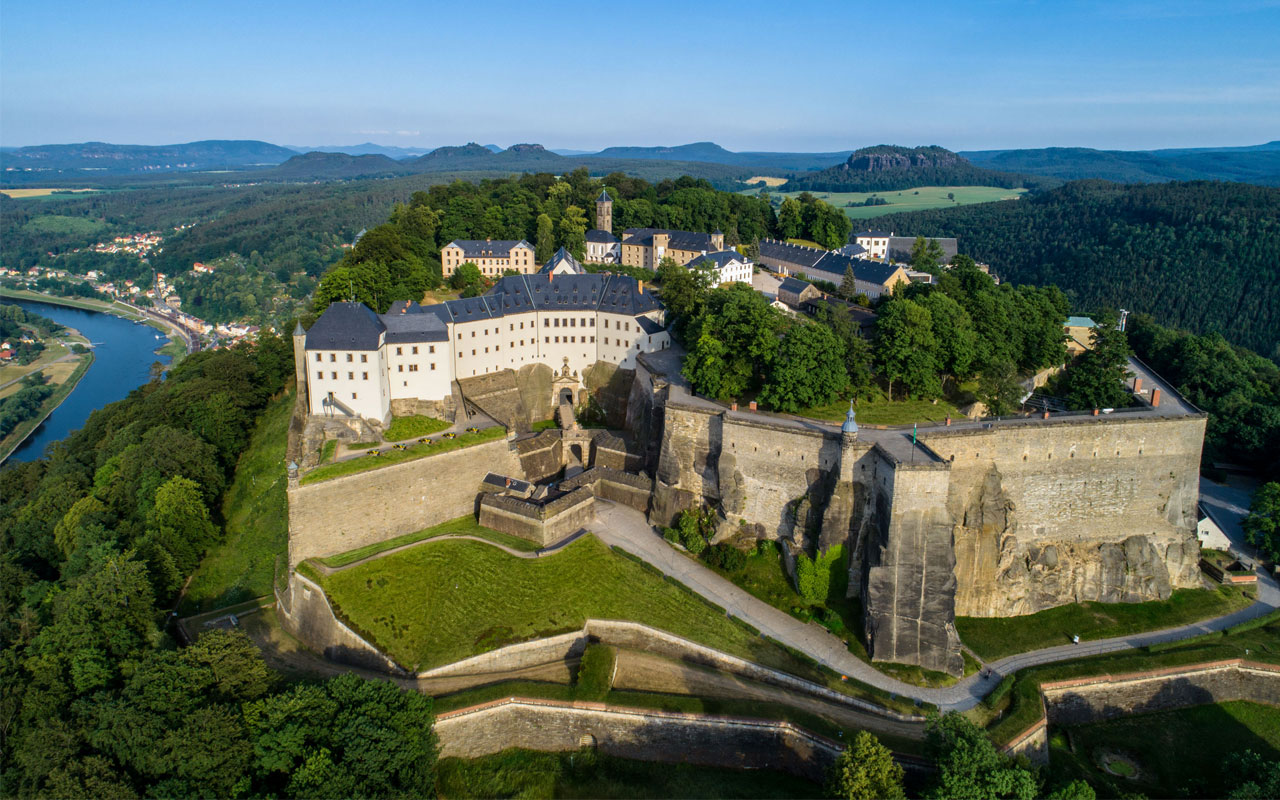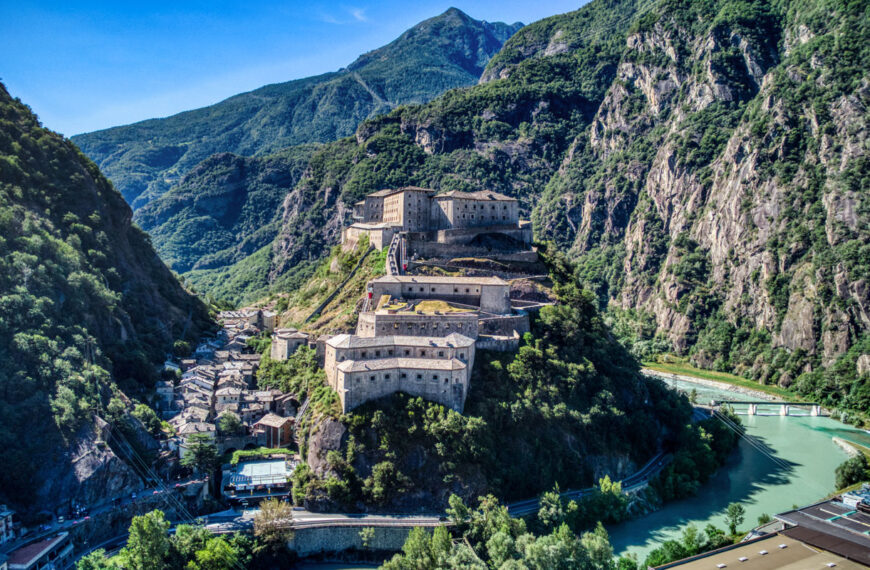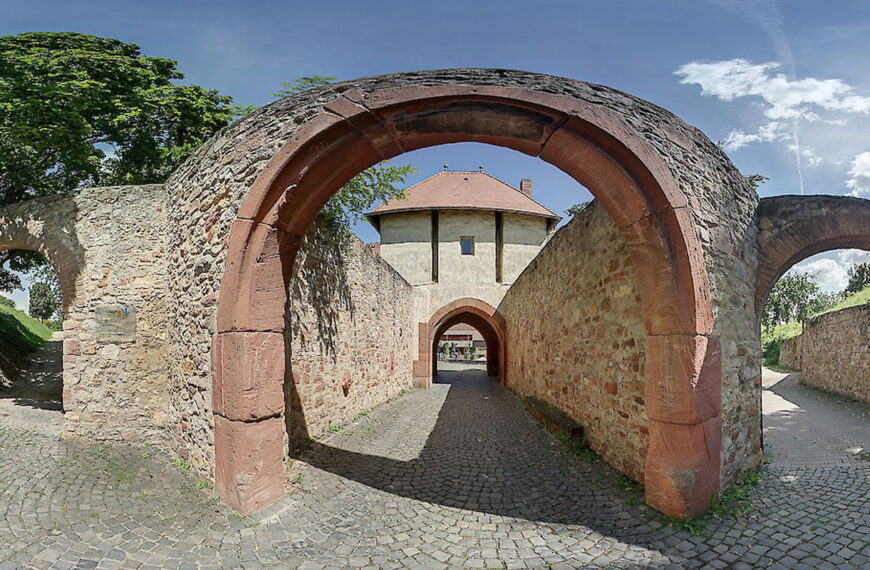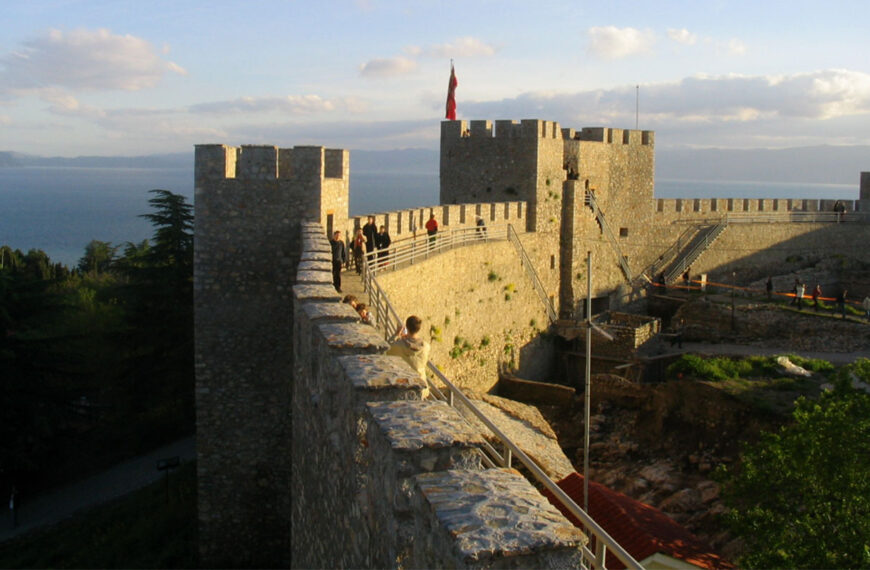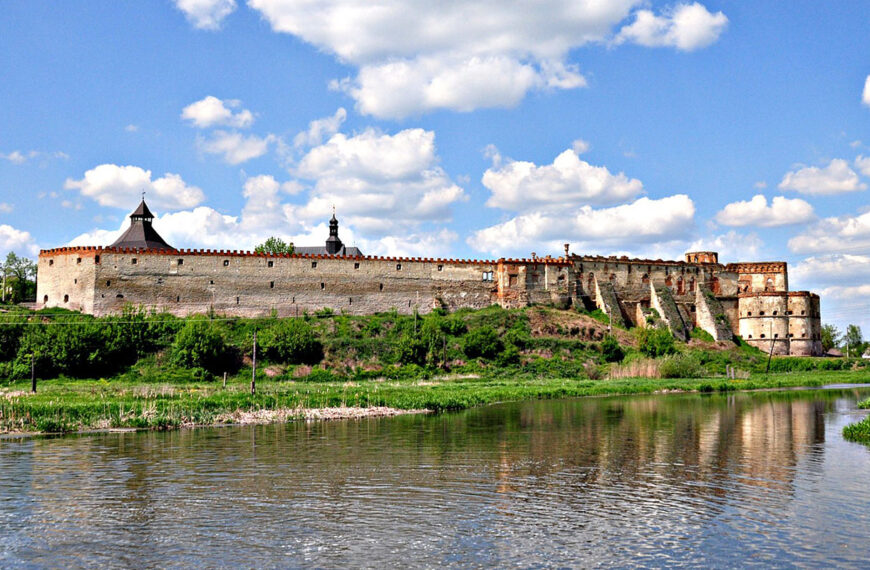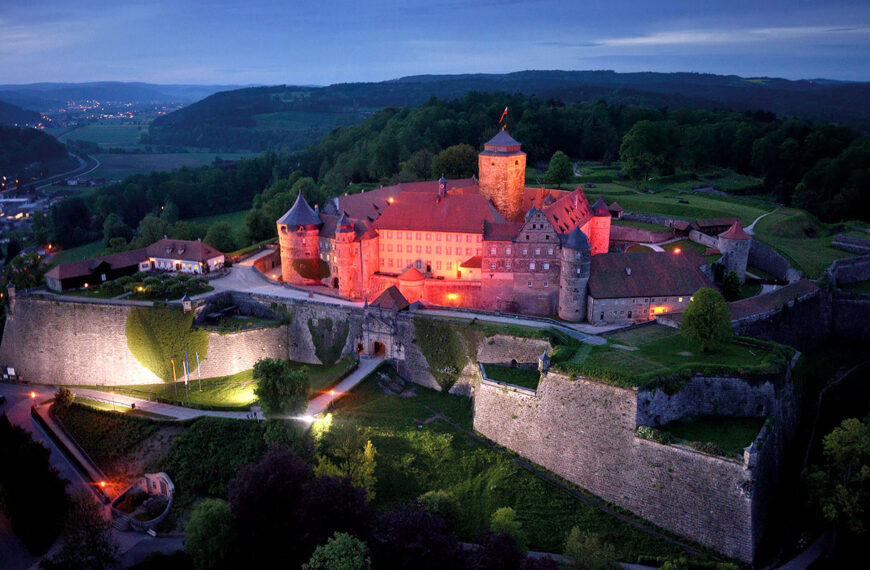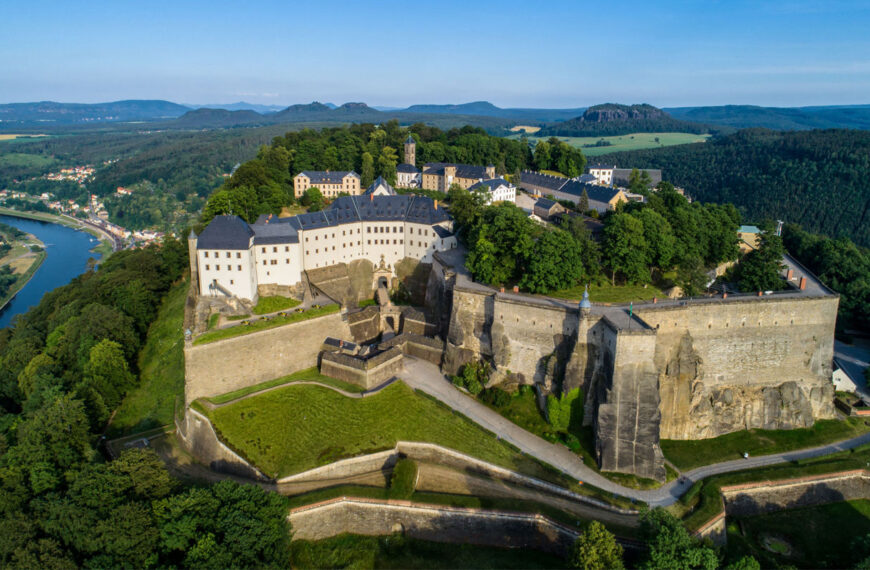Military buildings of splendour at exposed locations

Single military defense building, usually consisting of military function buildings, barrier, ditch, bastions and cannon conditions.
Example cover picture: Königstein Fortress, Saxony (DE)
Bastioned single fortresses from the time of origin between the 16th and 19th century are the most common type of fortifications in Central Europe. These buildings are often located at strategic exposed locations such as mountain pass, river mouths, at high altitudes and at the seaside. Their defensive role was limited to the intermediate range of available artillery. Geometrically exactly aligned defence systems were used for the protection against hostile firearms and enabled the unhindered use of the own shooting technique.
It was not uncommon for individual fortresses to emerge from former castle complexes, which were expanded and further fortified, e.g. the Rosenberg Fortress in Kronach (DE).
Diversity in function and architecture
Today, the tourist is provided with the opportunity to learn about the enormous architectonic diversity in single fortresses, their functionality and their world of experiences, often connected with magnificent views of cities, landscapes or oceans. Famous examples are mountain fortresses of highlands such as the Saxon Fortress Königstein (DE) or the Fortress Rosenau in Rasnov (RO).
In the central European lowland, ditches and moats were often used as an additional obstacle and defensive element. Today, defensive elements and the surrounding landscape create a mesmerizing panorama such as in the Water Fortress Heldrungen in Thuringia (DE).
Coastal fortresses at the Baltic Sea, North Sea, and Mediterranean Sea or at the Atlantic connect the special charm of the sea with the mighty and previously with canons equipped fortress walls.
Discover individual fortresses with FORTE CULTURA
If you see this after your page is loaded completely, leafletJS files are missing.

